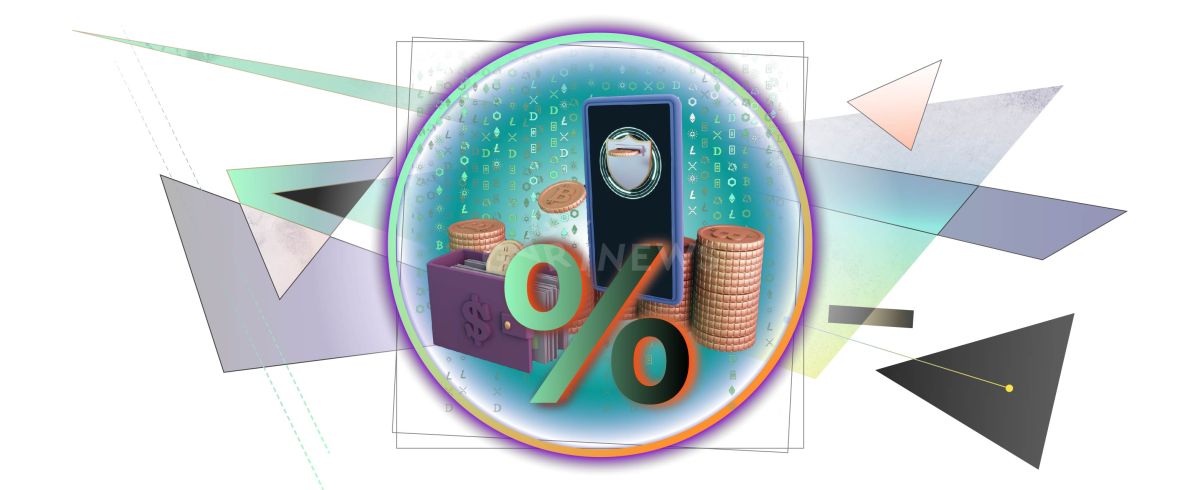What is slippage in crypto?

Slippage can occur when assets are bought or sold. It’s the difference between the order’s expected price and the order’s price at the moment of execution. In other words, orders enter the market yet the price may shift once the trade is actually completed. The slippage percentage illustrates this very shift in the digital asset’s price.
On this page
When trading, people often have a particular price set in mind, yet when they actually buy or sell assets, the price may end up being different. This is only natural considering the hectic speed of the market – prices can move fast.
Slippage itself can be split into two categories: positive and negative. The order is positive when the buy order’s price is lower than expected, consequently it’s the other way around for an order that ends up negative – the price is higher than expected. Negative slippage occurs when you buy an asset at a higher price than you initially planned for, which lowers the trader’s overall profit,increases risks, and leaves him with a more disadvantageous rate.
So now that we know what is a slippage in crypto, what factors cause it? Liquidity and volatility. The latter happens when the price of the given cryptocurrency changes drastically, leaving the price of the order’s execution time different from the quoted price at which it entered. All markets are unpredictable and it’s hard to foresee which way the wind blows in the digital asset world. We’ve all witnessed how Elon Musk’s tweet can boost a meme coin, so any trigger, either minor or significant, can impact the price of cryptocurrencies, and sometimes, drastically.
The other factor that causes slippage is the shortage of liquidity. A huge number of crypto tokens are either ‘unpopular’ or new, compared to the well-established ‘big boys’. Hence, the lowest ask and the highest bid are too far apart, leaving room for significant price shifts. With very few buyers, the asking price will be low as well, which causes slippage. It all comes down to how fast you can buy and sell a digital asset without affecting the price. With low liquidity, the slippage percentage will be higher.
So how can one control slippage?
Compared to limit orders where you can set the limits at which your order will be executed, market orders are trickier, as you pay the price at which the market is selling. When you go for a direct market order, you don’t control the price at which the order is executed, so it might be a reasonable strategy to stick to limit orders and stop losses. Limit orders may help reduce slippage since you can place the highest price you are willing to pay for a given digital asset. That being said, these orders might not be executed at all if the price stays in the set margins and timeframes.
Yet when trading in the crypto market, one should always stay cautious, especially in direct market orders: the market is known to be volatile, which leads to slippage and leaves traders with prices that they did not initially anticipate. One way to stay safe is to avoid volatile markets that can be caused by various events and announcements in the industry, for instance, a financial statement of a certain company. One other known strategy is to stick to digital assets with high liquidity.
Another key term is slippage tolerance. So what is slippage tolerance in crypto? It’s the max amount that the given order can move against the trader before it gets canceled. Usually exchanges provide this feature to traders, allowing them to set up the limits of slippage tolerance which protects them from drastic price swings. For instance, you want to buy Bitcoin at the price of $20,000 and set your slippage tolerance mark to $100. Your order will get canceled if the price of Bitcoin moves to $20,100 or higher.
You can also calculate slippage, which gives you a general idea of what slippage percentage you are willing to accept. The formula is rather simple – (Bid Price – Ask Price) / Quantity ) * 100%.
Whether slippage is a negative or positive for you, keep in mind and be aware that transactions may not go as you planned them to. By knowing what slippage in crypto trading is, one can minimize losses by building up an effective strategy and calculating your order outcome . Stay alert and vigilant because in the end, you can’t entirely predict which way the price goes.
The content on The Coinomist is for informational purposes only and should not be interpreted as financial advice. While we strive to provide accurate and up-to-date information, we do not guarantee the accuracy, completeness, or reliability of any content. Neither we accept liability for any errors or omissions in the information provided or for any financial losses incurred as a result of relying on this information. Actions based on this content are at your own risk. Always do your own research and consult a professional. See our Terms, Privacy Policy, and Disclaimers for more details.

























